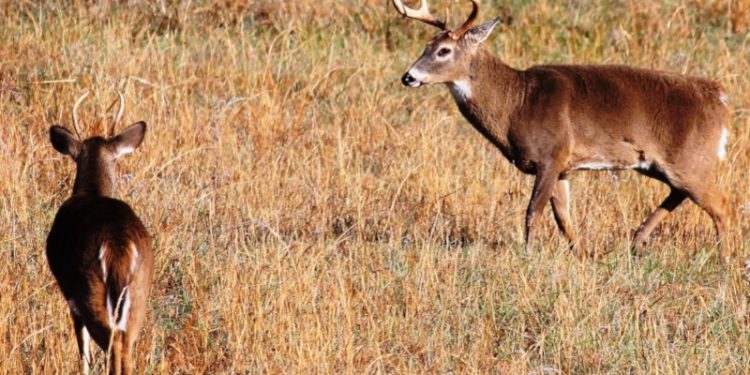For the first time, a chronic waste of waste (CWD) was confirmed in a deer found in Georgia.
Tina Johannsen, Deputy Manager of Game Management for the Georgia Department of Natural Resources, said that the disease had been found on a property on the line of Berrien-Lanier in southern Georgia in a deer collected on November 30, 2024 .
“The sample was taken the next day on December 1, and we obtained confirmation from the national laboratory of this positive (CWD test) this week,” said Johannsen. “The other samples that have been taken from these two counties in the past five years have not all been tested positive.”
CWD was identified for the first time in Colorado in 1967, according to information provided by the MRN, and has spread slowly across the country since then. It had been spotted in each state in the Southeast, with the exception of Georgia and South Carolina before this week’s confirmation of a positive case in Georgia.
The CWD is a neurological disease caused by poorly folded proteins called prayer, according to the MRN. Johannsen said that the disease is fatal in deer without known remedy, but that there has never been a documented case of the propagation of humans.
“This is a slow disease. It has a long period of incubation in deer infected,” said Johannsen. “During most of this incubation period, they will appear perfectly in good health. Symptoms and signs of waste will only appear towards the end, when the deer is about to succumb to the disease.”
The DNR of Georgia has created a CWD management area made up of counties of Berrien and Lanier near the place where the infected deer has been harvested and asks the hunters who kill the deer in this area to have animals tested for the disease.
For hunters in the northeast of Georgia, where no confirmed case of illness has been identified, Johannsen said that it was important to take precautions during hunting hunting in the affected area.
“The great thing for someone, say while traveling from Gainesville to the counties of Berrien or Lanier to hunt this year is that we ask him not to transport this carcass to Gainesville unless she takes her To a processor that will have this correctly. “Our main concern is that we just want to make sure that the deer of this positive area are not thrown on the landscape where the carcass, if it was infected, could potentially infect others deer. “
Johannsen said that if the MRN took action to limit the spread of the disease, it said it is inevitable for CWD to spread to other neighboring areas, as it has done throughout the rest of the country In recent decades. This could possibly include northeast of Georgia.
“It will spread slowly in the landscape,” said Johannsen. “It takes years and years and years if it’s just a natural spread.”
Johannsen said that to date, the DNR has no intention of instituting hunting regulations due to CWD and also does not plan to reduce the herd.
Anyone who sees a deer with symptoms such as emaciation, head and ears falling, excessive drool and abnormal behavior, is invited to contact his local game management office.
More information on the disease can be found on the Georgia DNR website.


